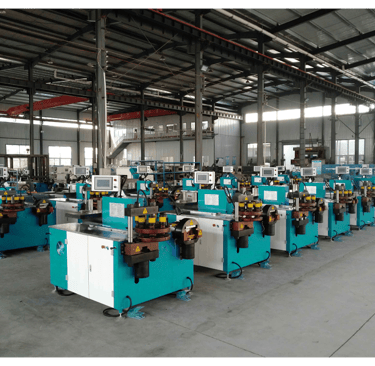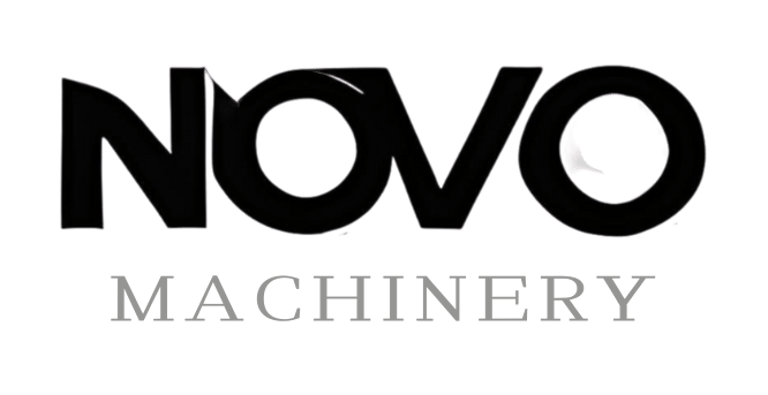Survival Guide for Small Factories Under $5 Million/Year: 3 Tips for Controlling Processing Costs with Busbar Machining Machines (with Case Studies from the Philippines / Mexico)
6/24/20254 min read


Understanding Busbar Machining Machines
Busbar machining machines play a crucial role in the operations of small manufacturing setups, particularly those with annual revenues under $5 million. These machines are designed to shape, cut, and process busbars—conductive metal bars that facilitate the distribution of electrical power. The importance of busbars in electrical systems cannot be overstated; they are commonly used in switchgear, power distribution units, and various electrical panels to help manage electrical flow efficiently.
The basic functionality of busbar machining machines lies in their ability to perform precise machining processes on these conductive bars. Equipped with advanced technology, these machines can undertake operations such as drilling, bending, and milling, ensuring that the busbars meet specific dimensional and performance requirements. This precision is vital in minimizing electrical losses, which can lead to cost savings in the long run.
One of the primary benefits of utilizing busbar machining machines in small factories is the enhancement of operational efficiency. By automating processes that were previously labor-intensive, manufacturers can minimize production times and reduce labor costs. This automation not only speeds up production but also diminishes the likelihood of human error, leading to a more consistent final product. Additionally, by adopting these machines, factories can optimize their production workflows, enabling them to meet customer demands more effectively.
Common applications of busbar machining machines extend across various industries, including telecommunications, renewable energy, and heavy manufacturing. In these sectors, the ability to customize busbar designs quickly and efficiently allows small manufacturers to stay competitive in a market increasingly driven by innovation and customer-specific requirements. Overall, understanding busbar machining machines is fundamental for small factories aiming to streamline operations, improve profitability, and reduce processing costs effectively.
Tip 1: Optimizing Machine Utilization
Maximizing the output from busbar machining machines is crucial for small factories, especially those operating with an annual revenue of less than $5 million. Effective optimization strategies center around three pivotal areas: scheduling, maintenance practices, and operator training. Each of these elements directly influences the efficiency of machining processes and, consequently, the overall processing costs.
Firstly, scheduling plays a significant role in ensuring that machines are available for production when needed. By adopting a well-structured production schedule, factories can minimize idle time, thereby enhancing machine utilization. Implementing efficient scheduling software can facilitate real-time monitoring of machine usage, which aids in identifying bottlenecks and adjusting workloads accordingly. For instance, a small factory in the Philippines employed this method and reported a 25% increase in production output due to optimized scheduling, showcasing how strategic planning can yield tangible results.
Secondly, maintaining busbar machining machines in prime condition is vital for their optimal performance. Regular maintenance schedules can prevent unexpected downtime, which is often costly. Factories that invest in preventative maintenance programs often experience fewer disruptions and increased longevity of their machines. A case study from a Mexican factory revealed that implementing a comprehensive maintenance routine led to a 30% reduction in repair costs and improved the overall efficiency of machine operations.
Lastly, operator training cannot be overlooked. Well-trained operators can significantly enhance machine efficiency by understanding best practices for machine settings and safety protocols. Investing in ongoing training programs ensures that operators are up-to-date with the latest technologies and techniques. A factory in the Philippines, for example, saw a remarkable increase in productivity after providing training sessions, illustrating the profound impact of knowledgeable staff on machine utilization.
Minimizing Waste and Errors
In the context of busbar machining, minimizing waste and errors is crucial for small factories striving to control processing costs. Various strategies can be employed to enhance precision while ensuring effective waste management. Precision machining is dictated by meticulous control throughout the manufacturing process, which directly impacts both product quality and operational efficiency.
One effective methodology to minimize waste is the implementation of detailed quality control measures. Regular inspections should be integrated into the production schedule to capture potential errors early in the process. Monitoring tools and techniques, such as statistical process control (SPC), can help detect variations in production that might lead to waste or defective products. These assessments allow factories to respond swiftly, making adjustments that prevent excessive waste from occurring. Additionally, encouraging a culture of feedback among employees can foster an environment where issues are promptly identified and addressed, thus reducing the likelihood of errors during machining.
Case studies from small factories in the Philippines and Mexico further illustrate these concepts in action. In a project highlighted in the Philippines, a factory adopted a pre-production checklist as part of their workflow, which reduced material waste by 30%. The checklist facilitated thorough inspections at various stages of the machining process, ensuring components met specifications before full-scale production commenced. Similarly, a Mexican factory implemented a feedback loop between the machining team and the quality assurance department, leading to a 25% reduction in errors and associated rework costs. These case studies exemplify the effectiveness of proactive waste management and error reduction strategies in enhancing manufacturing processes.
By prioritizing precision and incorporating robust quality control measures, small factories can significantly minimize waste and errors during busbar machining. As a result, they not only achieve cost savings but also improve overall product quality, fostering a more sustainable and efficient manufacturing environment.
Leveraging Technology for Cost Control
In an increasingly competitive manufacturing landscape, small factories must explore innovative solutions to control processing costs associated with busbar machining. Investing in technology is crucial to streamline operations and enhance efficiency. By adopting advanced software systems for inventory management, production tracking, and cost analysis, small factories can achieve significant savings. These systems facilitate real-time visibility into stock levels, allowing manufacturers to optimize their inventory turnover and reduce holding costs.
Furthermore, the integration of production tracking tools helps businesses monitor workflows in real time. This capability enables managers to identify bottlenecks swiftly and reallocate resources where necessary, ensuring smooth operations and timely deliveries. By analyzing production data, factories can uncover patterns that lead to higher efficiency, ultimately reducing operational costs.
Automation solutions also play a vital role in controlling costs. Automated busbar machining machines significantly minimize labor costs and reduce the margin of error associated with manual operations. Additionally, these machines can enhance output quality and consistency. The use of robotics in fabrication can further streamline processes, allowing factories to scale their operations without a corresponding increase in overhead costs.
Data analytics is another critical component of successful technology adoption. By leveraging analytics tools, small manufacturers can gain insights into their cost structures and identify areas for savings. For instance, a case study from a small factory in the Philippines highlights how implementing a data-driven cost analysis technique led to a 15% reduction in operational expenses. A similar case in Mexico demonstrated enhanced productivity through optimized scheduling and resource allocation, resulting in reduced downtime and cost-efficiency.
Tech adoption thus emerges as a pivotal strategy for small factories aiming to control processing costs in busbar machining. By integrating these technologies, manufacturers can not only improve their bottom line but also position themselves more competitively in the market.
Innovate
Leading manufacturer of busbar processing equipment solutions.
Contact
Support
+131 2713 4627
© 2025. All rights reserved.
